Physical Address
304 North Cardinal St.
Dorchester Center, MA 02124
Physical Address
304 North Cardinal St.
Dorchester Center, MA 02124
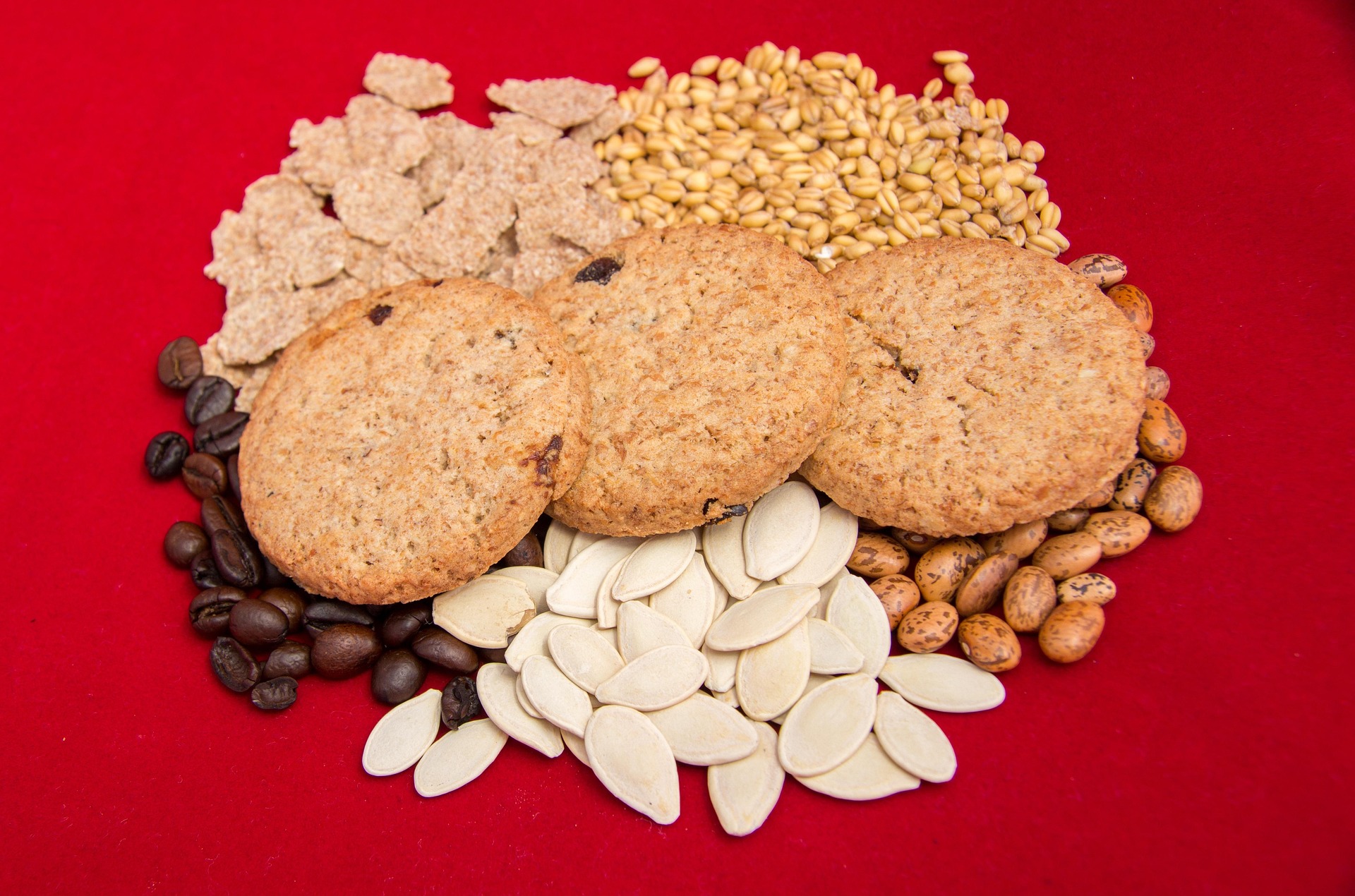
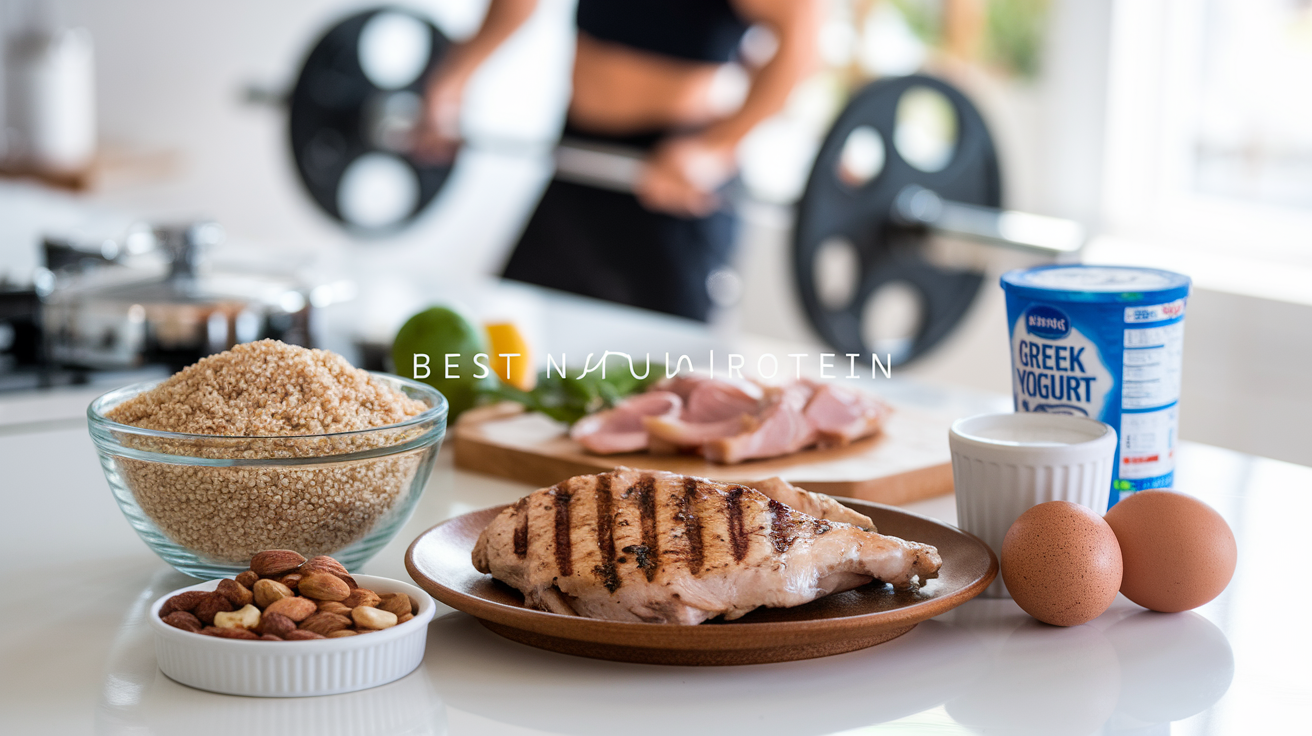
Are you tired of sifting through endless supplement options, wondering which protein powder will help you build muscle most effectively? 🤔 What if we told you that the best protein for muscle growth might already be in your kitchen? It’s time to ditch the artificial and embrace the natural!
In a world obsessed with quick fixes and miracle supplements, we often overlook the power of natural protein sources. These wholesome options not only fuel muscle growth but also provide a host of other health benefits. Whether you’re a plant-based enthusiast or a carnivore at heart, nature has the perfect protein solution for you. 💪🌱🍖
Join us as we explore the best natural proteins to grow muscle, from leafy greens to lean meats. We’ll dive into optimal intake, clever combinations, and practical ways to incorporate these powerhouses into your diet. Get ready to transform your body and your approach to nutrition – naturally!
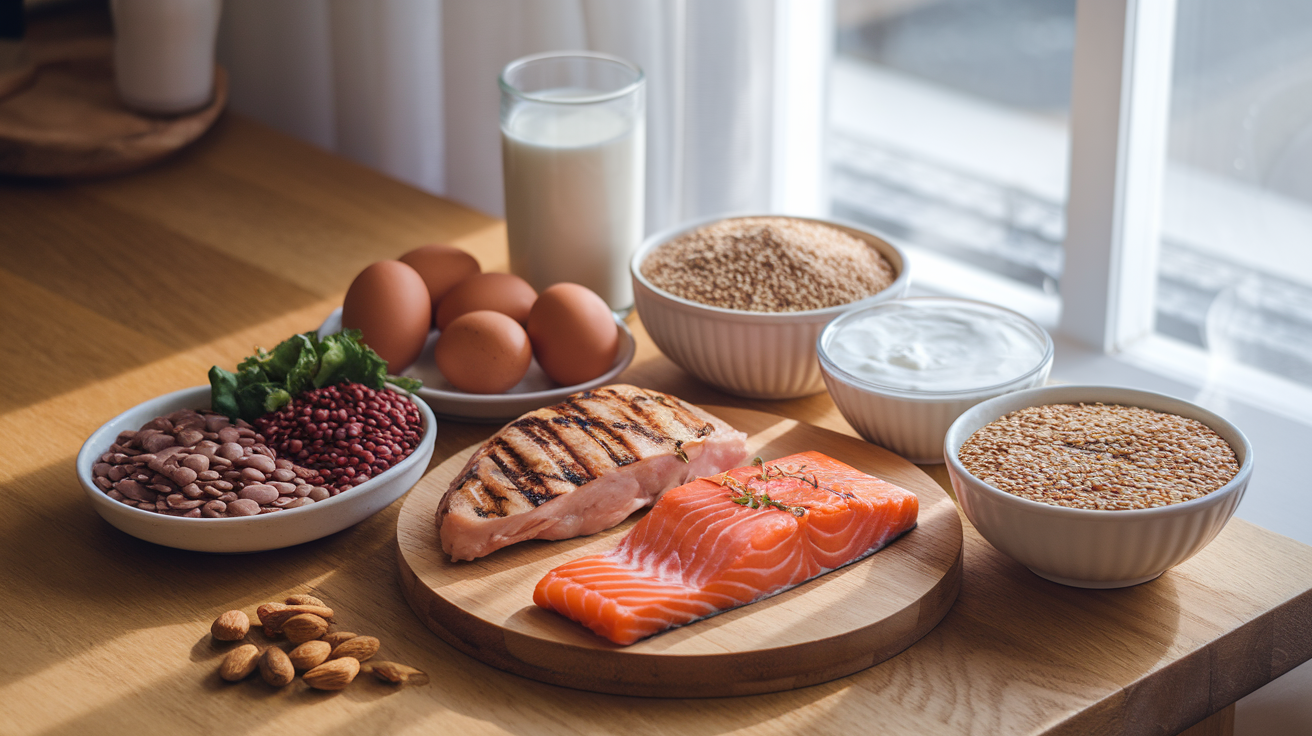
Natural protein refers to protein sources that are derived from whole, unprocessed foods found in nature. These proteins are typically obtained from plants, animals, and other organic sources without the addition of artificial ingredients or extensive processing. Natural proteins contain essential amino acids, which are the building blocks of muscle tissue and play a crucial role in various bodily functions.
Natural protein sources offer numerous advantages for muscle growth and overall health:
Natural protein sources also contribute to overall health, which indirectly supports muscle growth:
While synthetic protein supplements have their place in certain situations, natural protein sources often offer superior benefits for muscle growth. Let’s compare the two:
| Aspect | Natural Protein | Synthetic Protein Supplements |
|---|---|---|
| Nutrient density | High (includes vitamins, minerals, fiber) | Low (often isolated protein) |
| Digestibility | Generally easier to digest | May cause digestive issues for some |
| Bioavailability | High (body can utilize efficiently) | Varies (some may not be absorbed well) |
| Additives | Minimal to none | Often contain artificial flavors, sweeteners |
| Long-term health effects | Generally positive | Mixed (some concerns about long-term use) |
| Cost | Variable (can be cost-effective) | Often expensive |
| Convenience | Requires preparation | Ready to consume |
Natural proteins offer a more holistic approach to muscle growth. They provide not just the protein itself but also a range of other nutrients that support overall health and muscle development. For instance, eggs not only offer high-quality protein but also contain vitamins B12 and D, which are crucial for muscle function and recovery.
Moreover, natural protein sources often come with additional benefits. For example, fatty fish like salmon provide protein along with omega-3 fatty acids, which have anti-inflammatory properties that can aid in muscle recovery and growth.
While synthetic protein supplements can be convenient, especially for those with busy lifestyles or specific dietary restrictions, they often lack the synergistic effects of whole foods. Natural proteins work in harmony with other nutrients present in whole foods, potentially leading to better overall results in muscle growth and general health.
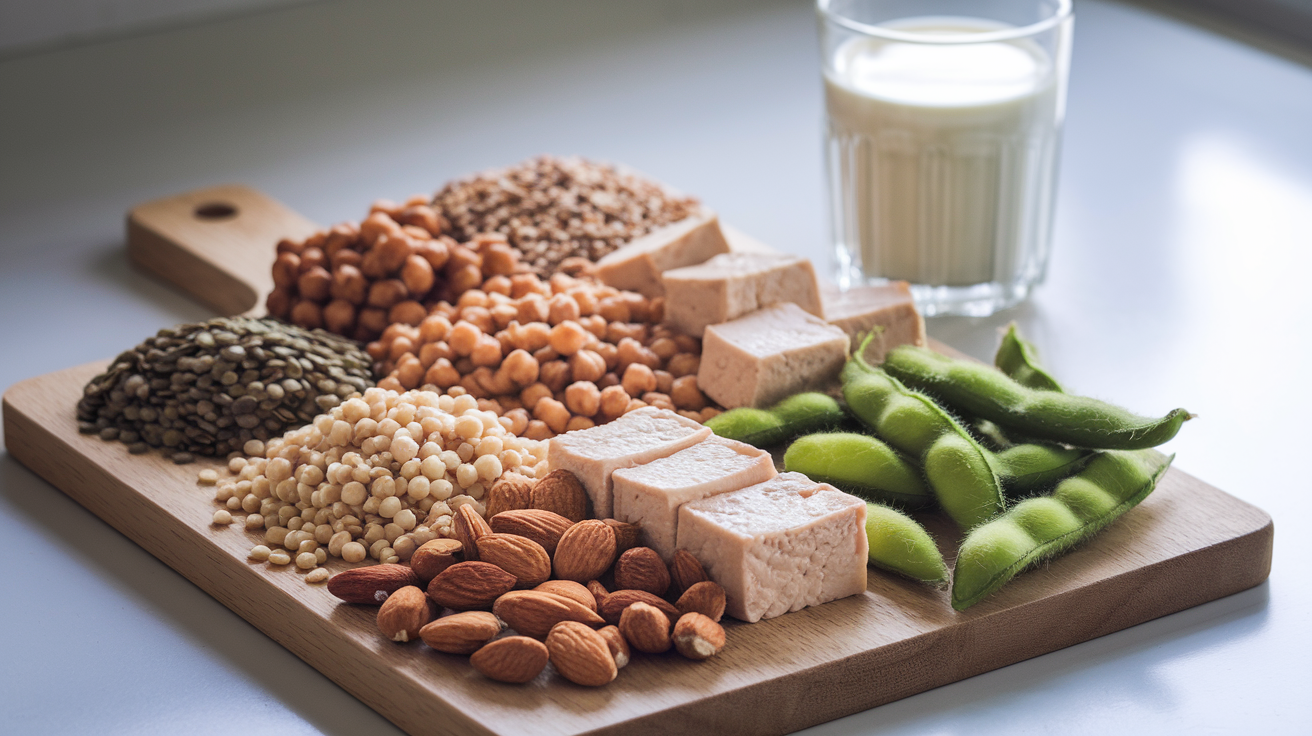
Legumes and beans are powerhouse plant-based protein sources that can significantly contribute to muscle growth. These versatile foods are not only rich in protein but also packed with essential nutrients, making them an excellent choice for those looking to build lean muscle mass naturally.
Some of the best legumes and beans for muscle growth include:
| Legume/Bean | Protein (per 100g cooked) | Additional Benefits |
|---|---|---|
| Lentils | 9g | High in iron and fiber |
| Chickpeas | 8.9g | Rich in folate and manganese |
| Black beans | 8.7g | Excellent source of antioxidants |
| Kidney beans | 8.7g | High in molybdenum and vitamin K |
| Pinto beans | 9g | Good source of thiamine and magnesium |
These protein-rich legumes and beans can be easily incorporated into various dishes, from salads and soups to stir-fries and burgers.
While many people associate grains primarily with carbohydrates, several whole grains provide a significant amount of protein. Quinoa, in particular, stands out as a complete protein source, containing all nine essential amino acids.
Top protein-rich whole grains include:
Quinoa, with its 8g of protein per cooked cup, is an excellent choice for muscle building. It’s also rich in fiber, iron, and magnesium, supporting overall health and recovery.
Nuts and seeds are not only great sources of healthy fats but also pack a protein punch. They’re perfect for snacking or adding to meals for an extra protein boost.
Some of the best nuts and seeds for muscle growth are:
| Nut/Seed | Protein (per 28g serving) | Additional Benefits |
|---|---|---|
| Almonds | 6g | High in vitamin E and magnesium |
| Pumpkin seeds | 7g | Rich in zinc and iron |
| Chia seeds | 4g | Excellent source of omega-3 fatty acids |
| Hemp seeds | 9g | Contains all essential amino acids |
| Walnuts | 4g | High in omega-3 fatty acids and antioxidants |
Soy products are renowned for their high protein content and complete amino acid profile, making them excellent choices for muscle growth. They’re versatile and can be used in various forms to suit different tastes and dietary preferences.
Popular soy products for muscle building include:
Tofu, for instance, contains about 8g of protein per 100g serving, while tempeh offers an impressive 19g per 100g. These soy products can be easily incorporated into stir-fries, salads, smoothies, and even used as meat substitutes in various recipes.
By incorporating these diverse plant-based protein sources into your diet, you can effectively support muscle growth while enjoying a variety of nutritious and delicious foods. Next, we’ll explore high-quality animal protein sources that can complement these plant-based options for optimal muscle development.
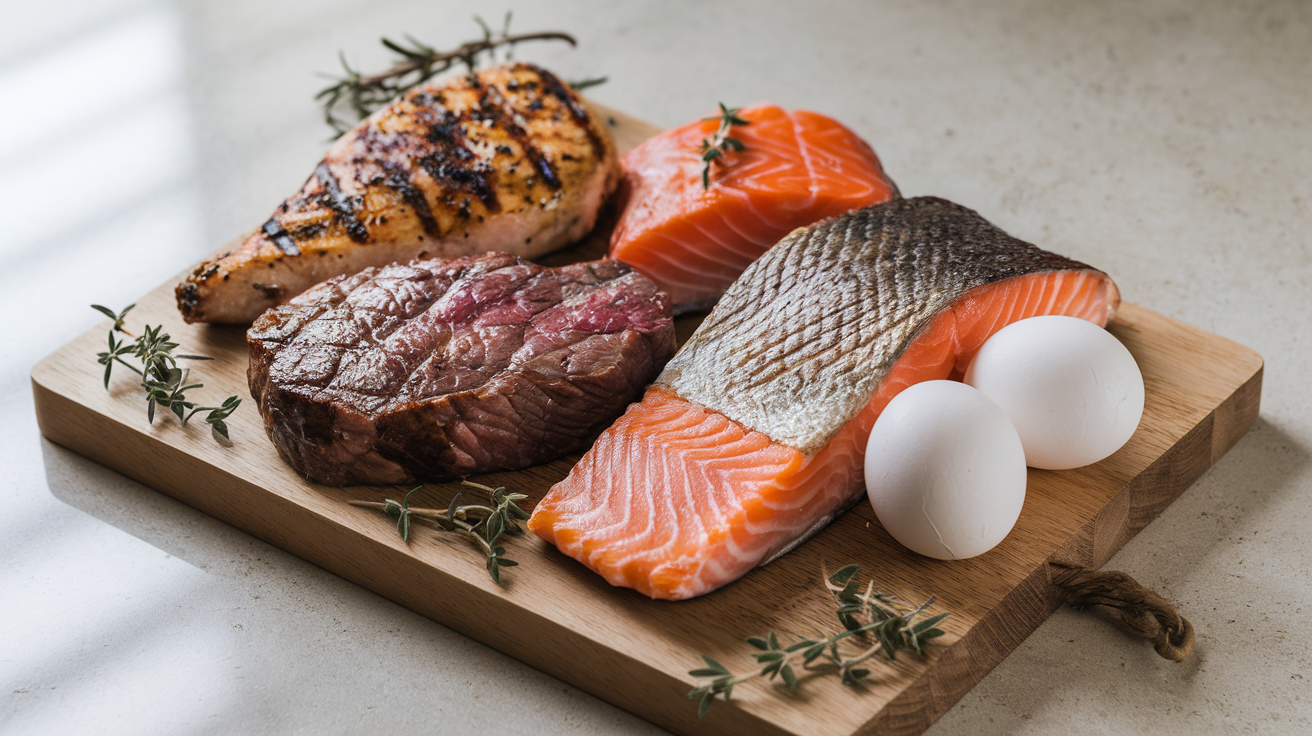
Lean meats are an excellent source of high-quality animal protein for muscle growth. They provide essential amino acids and are generally low in saturated fats, making them an ideal choice for those looking to build muscle while maintaining a healthy diet.
Some of the best lean meat options include:
| Meat Type | Protein per 100g | Fat per 100g |
|---|---|---|
| Chicken breast | 31g | 3.6g |
| Turkey breast | 29g | 1g |
| Lean beef sirloin | 29g | 6g |
| Pork tenderloin | 26g | 3g |
Incorporating these lean meats into your diet can significantly contribute to your muscle-building goals while keeping your fat intake in check.
Fish and seafood are not only rich in protein but also provide essential omega-3 fatty acids, which can support muscle growth and overall health. Some top choices include:
Fish and seafood offer a diverse range of nutrients that complement their high protein content. For instance, salmon is rich in vitamin D, which plays a crucial role in muscle function and growth.
Eggs are often referred to as the “perfect protein” due to their complete amino acid profile. They are versatile, affordable, and easy to incorporate into various meals. Key benefits of eggs for muscle growth include:
A typical large egg contains about 6 grams of protein, making them an excellent choice for muscle-building diets.
Dairy products are rich in high-quality proteins, particularly casein and whey, which are known for their muscle-building properties. Some top dairy choices for muscle growth include:
| Dairy Product | Protein per 100g | Key Benefits |
|---|---|---|
| Greek yogurt | 10g | Probiotics, calcium |
| Cottage cheese | 11g | Slow-digesting casein |
| Milk | 3.4g | Vitamin D, calcium |
| Low-fat cheese | 24g | Calcium, vitamin B12 |
These dairy products not only provide protein but also offer calcium, which is essential for muscle contraction and bone health.
When incorporating these animal protein sources into your diet, it’s important to consider variety and balance. Combining different sources can ensure you’re getting a wide range of nutrients to support muscle growth and overall health. Additionally, pairing these protein sources with complex carbohydrates and healthy fats can optimize your muscle-building potential.
Now that we’ve covered high-quality animal protein sources, let’s explore the optimal protein intake for muscle growth to ensure you’re consuming the right amount to meet your fitness goals.
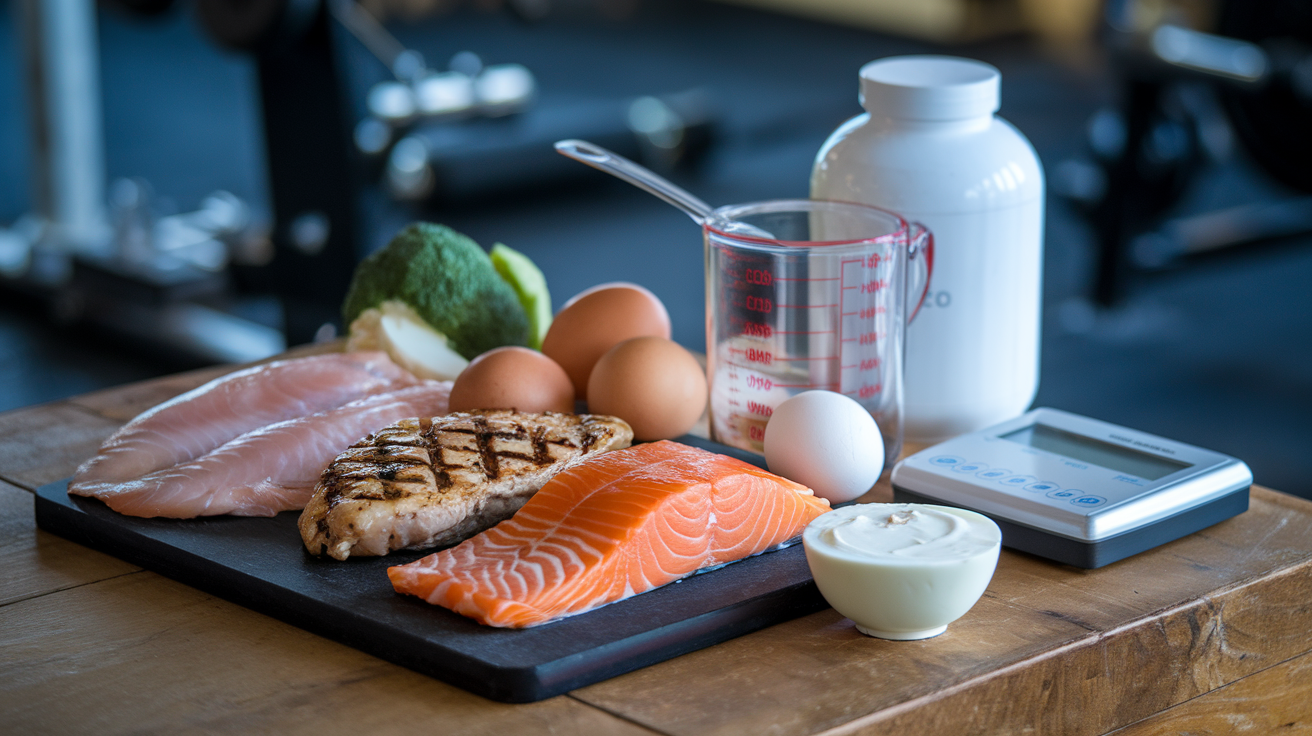
To effectively grow muscle, understanding your individual protein requirements is crucial. The amount of protein you need depends on various factors, including your body weight, activity level, and fitness goals. Here’s a simple guide to help you calculate your protein needs:
To calculate your daily protein intake, multiply your body weight (in pounds) by the appropriate factor from the list above. For example, if you weigh 150 pounds and are moderately active, your protein intake should be between 180-240 grams per day.
| Activity Level | Protein Intake (g/lb of body weight) | Example for 150 lb person |
|---|---|---|
| Sedentary | 0.8-1.0 | 120-150 g |
| Active | 1.2-1.6 | 180-240 g |
| Athlete | 1.6-2.2 | 240-330 g |
It’s important to note that these are general guidelines, and individual needs may vary. Consult with a nutritionist or dietitian for personalized recommendations.
The timing of your protein intake plays a crucial role in muscle growth and recovery. To maximize muscle protein synthesis and support muscle growth, consider the following timing strategies:
Research suggests that consuming protein around your workouts can enhance muscle protein synthesis and promote better recovery. However, the overall daily protein intake is more important than precise timing for most individuals.
To optimize muscle growth and maintain a positive protein balance, it’s essential to distribute your protein intake evenly throughout the day. This approach helps maintain a steady supply of amino acids for muscle building and repair. Here are some tips for spreading your protein intake:
By spreading your protein intake, you can:
Remember that consistency is key when it comes to protein intake for muscle growth. Stick to your calculated protein needs, time your consumption strategically, and spread your intake throughout the day for optimal results. In the next section, we’ll explore how to combine different protein sources to maximize the benefits for muscle growth and overall health.
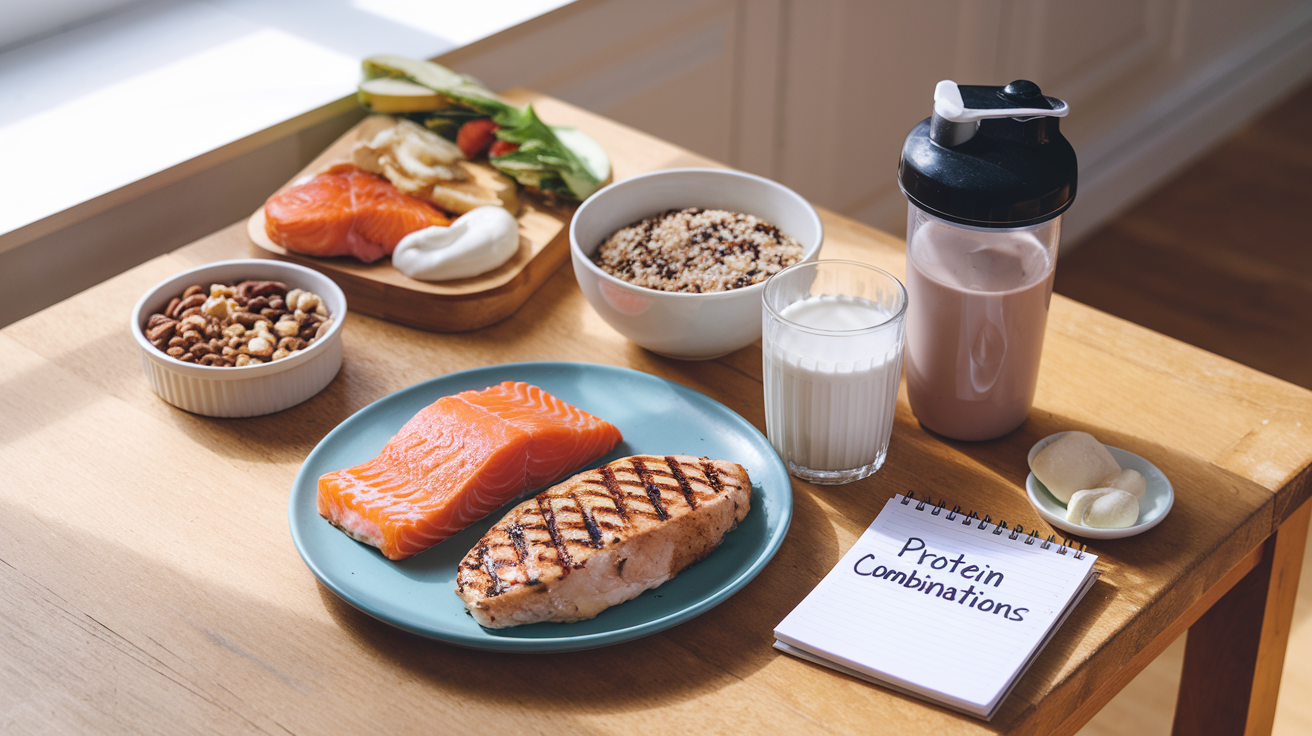
When it comes to maximizing muscle growth, combining different protein sources in your meals is key. A balanced meal should include a variety of nutrients, with protein being a crucial component. Here’s how to create a well-rounded meal for optimal muscle growth:
By following this template, you can ensure that your body receives a diverse range of amino acids and other essential nutrients to support muscle growth and overall health.
Combining different protein sources can help you achieve a complete amino acid profile, especially important for those following plant-based diets. Here are some effective complementary protein combinations:
| Plant-Based Protein 1 | Plant-Based Protein 2 | Complete Protein Meal Idea |
|---|---|---|
| Beans | Rice | Black bean and brown rice burrito |
| Lentils | Nuts | Lentil salad with chopped walnuts |
| Whole grain bread | Peanut butter | Whole grain toast with peanut butter |
| Hummus | Whole wheat pita | Hummus and pita platter with vegetables |
| Quinoa | Peas | Quinoa and green pea stir-fry |
For those including animal proteins, combining them with plant-based sources can provide additional benefits:
To maximize the benefits of your protein intake, consider these strategies to enhance absorption:
Additionally, timing your protein intake around your workouts can be beneficial. Consuming protein within 30 minutes after exercise can help support muscle recovery and growth.
Now that we’ve explored how to combine protein sources effectively, let’s look at practical ways to incorporate these natural proteins into your daily diet for optimal muscle growth.

When it comes to incorporating natural protein into your diet, effective meal planning is key. By strategizing your meals in advance, you can ensure a consistent and adequate protein intake throughout the day. Here are some practical meal planning strategies to help you boost your protein consumption:
One of the most efficient ways to incorporate protein into your diet is through batch cooking. Prepare large quantities of protein-rich foods like grilled chicken, baked fish, or lentil stews at the beginning of the week. This approach saves time and ensures you always have a protein source ready for your meals.
Another strategy is to focus on protein-centric meal prep. Start by selecting your protein source for each meal, then build the rest of the plate around it. This method helps prioritize protein intake and makes it easier to meet your daily requirements.
| Meal | Protein Source | Complementary Foods |
|---|---|---|
| Breakfast | Greek yogurt | Berries, nuts, whole grain toast |
| Lunch | Grilled chicken | Quinoa, mixed vegetables |
| Dinner | Baked salmon | Sweet potato, steamed broccoli |
| Snack | Hard-boiled eggs | Carrot sticks, hummus |
Incorporating protein-rich meals doesn’t have to be time-consuming. Here are some quick and easy high-protein recipes that you can whip up in no time:
Maintaining your protein intake while on the move can be challenging, but with the right snacks, it’s entirely possible. Here are some portable, protein-rich snack ideas:
These snacks are not only convenient but also provide a good amount of protein to keep you satiated between meals. For instance, a handful of almonds (about 1 ounce) contains around 6 grams of protein, while a single hard-boiled egg provides about 6-8 grams of protein.
Remember, the key to successfully incorporating natural protein into your diet is consistency and variety. By implementing these meal planning strategies, quick recipes, and on-the-go snack ideas, you’ll be well on your way to meeting your protein needs and supporting your muscle growth goals. In the next section, we’ll explore how natural protein specifically supports muscle growth and recovery.
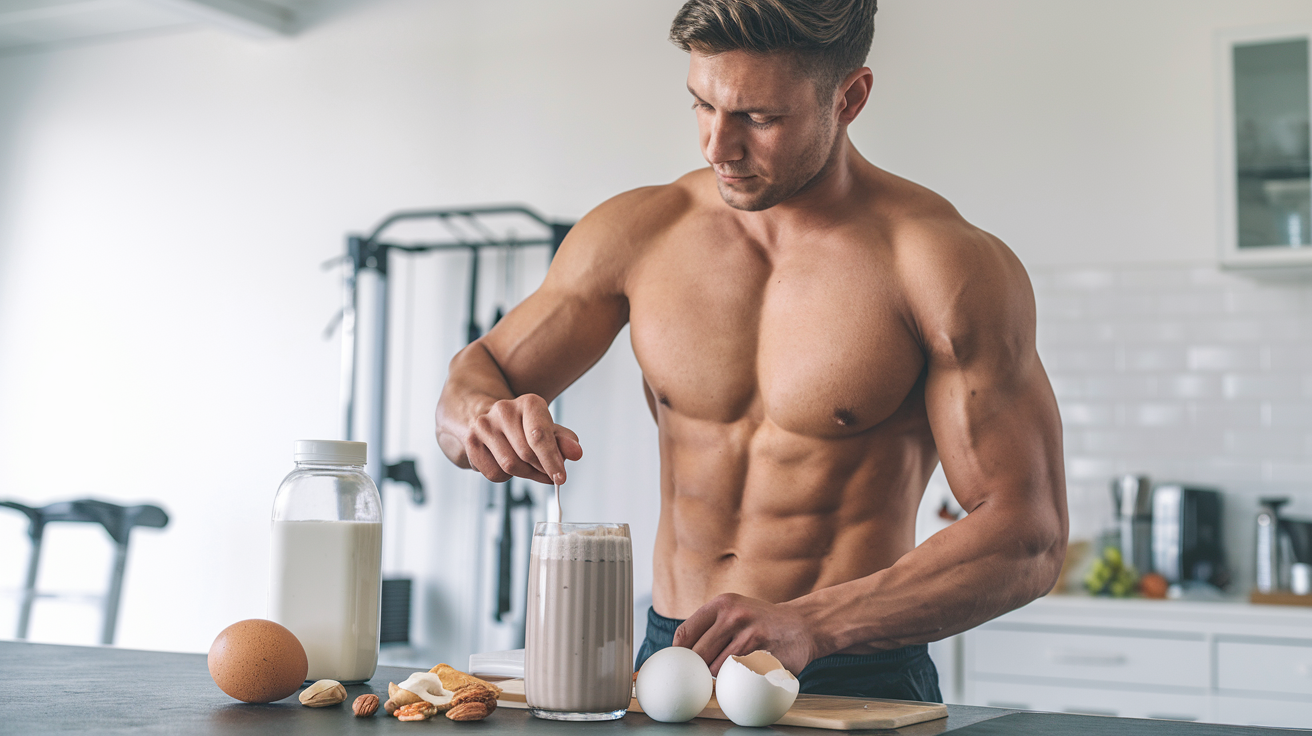
Protein plays a crucial role in supporting muscle growth, particularly in the processes of muscle repair and recovery. After intense exercise or resistance training, muscle fibers experience micro-tears. Protein is essential for repairing these tears and building stronger, larger muscles.
The body breaks down dietary protein into amino acids, which are then used to:
Natural protein sources provide a steady supply of these essential building blocks, ensuring that your muscles have the necessary resources for optimal growth and recovery.
Not all proteins are created equal when it comes to muscle growth. The amino acid profile of a protein source is crucial for determining its effectiveness in supporting muscle development. Essential amino acids (EAAs), particularly branched-chain amino acids (BCAAs), are vital for muscle protein synthesis.
Here’s a comparison of amino acid profiles in common natural protein sources:
| Protein Source | Leucine (g/100g) | Isoleucine (g/100g) | Valine (g/100g) |
|---|---|---|---|
| Whey Protein | 10.6 | 6.4 | 5.9 |
| Egg White | 8.5 | 5.4 | 6.9 |
| Chicken Breast | 7.5 | 4.8 | 5.1 |
| Soy Protein | 7.8 | 4.9 | 5.0 |
Leucine, in particular, is known as the primary trigger for muscle protein synthesis. Natural protein sources rich in leucine and other BCAAs are ideal for supporting muscle growth.
While protein intake is crucial, it’s most effective when combined with resistance training. The synergy between natural protein consumption and resistance exercise creates an optimal environment for muscle growth:
To maximize this synergy, consume natural protein sources within 30 minutes to 2 hours after your workout. This timing helps capitalize on the “anabolic window” when muscles are most receptive to nutrient uptake and protein synthesis.
While protein is essential for muscle growth, it’s important to maintain a balanced diet that includes other vital nutrients. A well-rounded approach ensures optimal muscle development and overall health:
Aim for a balanced macronutrient ratio, typically around:
This balance helps support muscle growth while providing the necessary energy and nutrients for overall health and performance.
By focusing on high-quality natural protein sources, timing your protein intake strategically, and maintaining a balanced diet, you can effectively support muscle growth and achieve your fitness goals. Remember that consistency in both nutrition and training is key to long-term success in building and maintaining muscle mass.

Building muscle naturally requires a strategic approach to protein consumption. By incorporating a variety of high-quality protein sources into your diet, you can support muscle growth and overall health. Whether you prefer plant-based options like legumes, quinoa, and nuts, or animal-based proteins such as lean meats, eggs, and dairy, there are numerous ways to meet your protein needs for optimal muscle development.
Remember that consistency is key when it comes to muscle growth. Aim for a balanced diet that includes adequate protein intake, spread throughout the day. Combine different protein sources to ensure you’re getting a full spectrum of essential amino acids, and don’t forget to pair your protein consumption with regular strength training exercises. By focusing on natural, whole food protein sources and maintaining a well-rounded approach to nutrition and fitness, you’ll be well on your way to achieving your muscle-building goals.
to know about best organic health product please visit the LINK
to know more about protein please visit the LINK